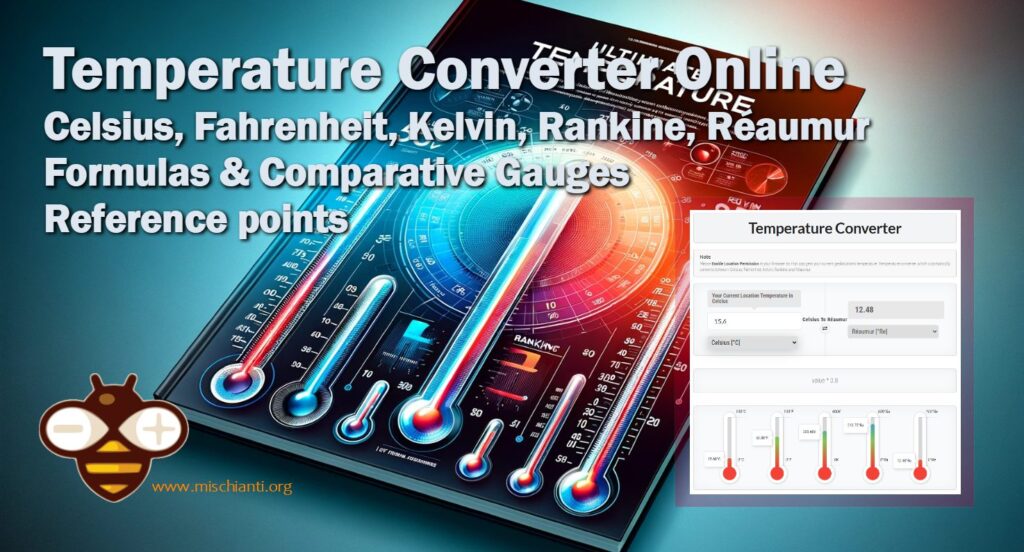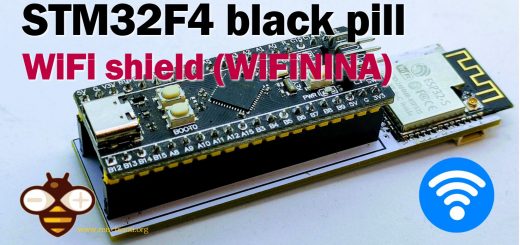In a world where understanding temperature is crucial across various domains – from meteorology to cooking, and scientific research to everyday life – the Ultimate Temperature Converter emerges as an indispensable tool.

This advanced converter not only simplifies conversions between Celsius, Fahrenheit, Kelvin, Rankine, and Réaumur but also educates users on the underlying formulas and visually represents these temperatures for better comprehension.
The Five Scales: A Brief Overview
- Celsius (°C): Named after Anders Celsius, this scale is widely used globally. Water freezes at 0°C and boils at 100°C under standard conditions.
- Fahrenheit (°F): Proposed by Daniel Gabriel Fahrenheit, this scale is primarily used in the United States. Here, water freezes at 32°F and boils at 212°F.
- Kelvin (K): Lord Kelvin introduced this absolute temperature scale where 0 K is absolute zero, and it has no negative values.
- Rankine (°R): Similar to Kelvin, Rankine is an absolute temperature scale, but it uses Fahrenheit degrees.
- Réaumur (°Ré): Created by Réne Antoine Ferchault de Réaumur, this scale is less common, with water freezing at 0°Ré and boiling at 80°Ré.
The Converter: How It Works
Our Ultimate Temperature Converter stands out with its user-friendly interface. Here’s how it works:
- Selection: Choose the scale you have your temperature in and the scale you want to convert to.
- Input & Conversion: Enter the temperature. The tool instantly provides the equivalent values in other scales.
- Formulas Revealed: For each conversion, the specific formula used is displayed. For example, converting Celsius to Fahrenheit involves the formula
1.8 * value + 32. - Visual Comparison: Each temperature is represented on a thermometer gauge, offering a visual understanding of how these temperatures compare across different scales.
Educational and Practical Applications
This converter is not just a practical tool; it’s an educational resource. By showing the formulas, it helps students and curious minds understand the relationships between different temperature scales. Moreover, the visual gauge comparison aids in comprehending how temperatures align or differ in various units.
Descriptions of Specific Temperature Points
0°C (32°F, 273.15K, 491.67°R, 0°Ré) – Ice Point
At 0 degrees Celsius, water freezes, marking the ice point. This temperature is crucial in meteorology for predicting ice and snow conditions. It is also a standard reference point in scientific studies for calibrating thermometers and other temperature-related experiments.
18°C to 21°C (64.4°F to 69.8°F, 291.15K to 294.15K, 523.87°R to 529.47°R, 14.4°Ré to 16.8°Ré) – Comfortable Indoor Temperature Range
This temperature range is often considered comfortable for indoor settings, such as homes and offices. It strikes a balance between being warm enough for comfort without requiring heavy clothing and cool enough to be refreshing and conducive to focus and productivity. This range is also energy-efficient for heating systems in cooler climates and air conditioning in warmer climates, making it a preferred choice for sustainable living and working environments.
37°C (98.6°F, 310.15K, 558.27°R, 29.6°Ré) – Average Human Body Temperature
37 degrees Celsius is often cited as the average normal body temperature for humans. It’s a critical reference point in medicine, as deviations from this norm can indicate health issues. This temperature is essential for maintaining metabolic and physiological functions in the human body.
100°C (212°F, 373.15K, 671.67°R, 80°Ré) – Water Boiling Point
Water boils at 100 degrees Celsius under standard atmospheric pressure. This boiling point is a fundamental concept in cooking, chemistry, and physics. It’s the basis for sterilization processes, cooking methods like boiling and steaming, and various scientific experiments.
-18°C (0°F, 255.15K, 459.27°R, -14.4°Ré) – Freezer Temperature
A typical freezer is set to -18 degrees Celsius. This temperature is low enough to keep food frozen and prevent bacterial growth, making it ideal for long-term food storage. It’s also a reference point in the cold chain management for transportation and storage of perishable goods.
-89.2°C (-128.6°F, 183.95K, 330.71°R, -71.36°Ré) – Coldest Recorded Earth Temperature
The coldest temperature ever recorded on Earth was -89.2 degrees Celsius at the Soviet Union’s Vostok Station in Antarctica on July 21, 1983. This extreme temperature is significant in climatology and environmental studies, offering insights into Earth’s climatic extremes and adaptations of life in extreme conditions.
15°C (59°F, 288.15K, 518.67°R, 12°Ré) – Standard Reference Temperature
15 degrees Celsius is often used as a standard reference temperature in various scientific and engineering contexts. It represents a moderate environmental condition under which many physical measurements are standardized, including the properties of gases and liquids.
These temperature points not only provide practical reference markers but also illustrate the diverse applications and significance of temperature measurements in various fields.
Arduino-Based Temperature Conversion Examples
1. Basic Temperature Monitoring and Display
- Objective: Use an Arduino with a temperature sensor to measure ambient temperature and display it in different scales.
- Components: Arduino board, digital temperature sensor (like the DS18B20), LCD display.
- Process: The sensor measures the temperature and sends the data to the Arduino. The Arduino then converts this temperature into Celsius, Fahrenheit, Kelvin, Rankine, and Réaumur scales using programmed formulas and displays them on the LCD.
2. Environmental Data Logger
- Objective: Create a data logger that records temperature in multiple scales over time.
- Components: Arduino, temperature/humidity sensor (like DHT11 or DHT22), SD card module, SD card.
- Process: The Arduino reads the temperature and humidity data from the sensor, converts the temperature to different scales, and logs the data with timestamps onto the SD card for later analysis.
3. IoT Temperature Monitoring System
- Objective: Develop an Internet of Things (IoT) system that measures temperature and makes the data accessible online in multiple scales.
- Components: Arduino with WiFi capabilities (like Arduino Uno WiFi), temperature sensor.
- Process: The Arduino collects temperature data, converts it into different scales, and sends it to a cloud platform (such as ThingSpeak or Firebase) where it can be monitored in real-time from any internet-connected device.
4. Interactive Temperature Conversion Tool
- Objective: Create an interactive tool that allows users to input a temperature in one scale and get conversions in others.
- Components: Arduino board, keypad, LCD display.
- Process: The user inputs a temperature and selects the scale using the keypad. The Arduino performs the conversion to other scales and displays the results on the LCD screen.
Arduino Code Snippet for Temperature Conversion
Here’s a basic snippet of Arduino code to convert Celsius to other scales:
float celsiusToFahrenheit(float celsius) {
return (celsius * 9.0) / 5.0 + 32;
}
float celsiusToKelvin(float celsius) {
return celsius + 273.15;
}
float celsiusToRankine(float celsius) {
return (celsius + 273.15) * 9.0 / 5.0;
}
float celsiusToReaumur(float celsius) {
return celsius * 0.8;
}
Arduino temperature humidity sensor comparing
- Temperature humidity sensors comparison (Specifications)
- Temperature humidity sensors comparison (Code configuration)
- Temperature humidity sensors comparison (Data)
Thanks
The Ultimate Temperature Converter is more than just a utility; it’s a bridge between different temperature measurement systems, offering clarity and ease of use. Whether you’re a student, a professional, or just someone curious about how temperatures translate across scales, this tool is designed to cater to your needs.











